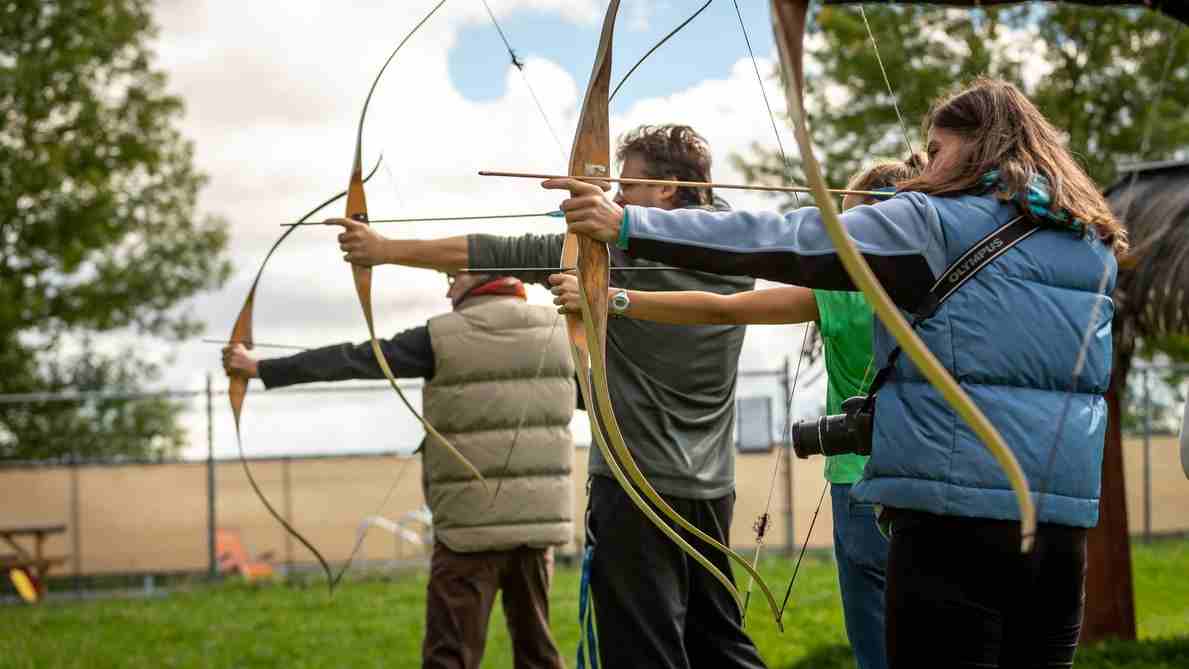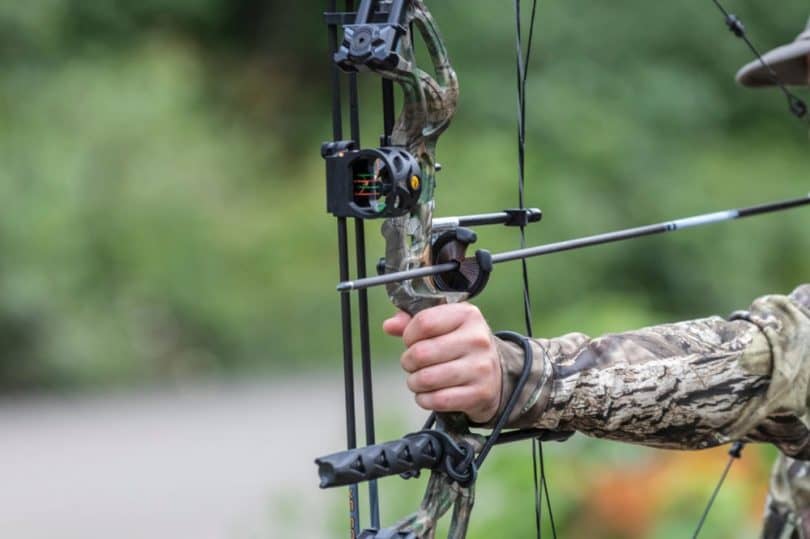There are so many different kinds of archery bows available today; it can be a little overwhelming at first to decide which one is right for you and your needs.
But how to choose a bow that’ll fit perfectly with your requirements and budget?
To help you sort through all the options, here are some of the considerations.
This involves not only the size and weight of its bow as a whole but also considerations such as cost, return policy as well as the type of target shooting or hunting you’re going to do.
Let’s jump right in!
How to Choose a Bow: PRO Tips and Tricks
Setting up the budget
Bow hunting is a lot like buying a car, you can get all the bells and whistles, but at a high price.
When it comes to choosing a bow for your own, you need to be sure you spend your money wisely.
Make a list of what is most important to you, and then pick out a bow that meets the minimum. Each bow can have a different shape, materials, accessories, and special features.
Things like the arrow stand, bow sights, buckles, and lances may lead to extra costs over and above the expense of the normally priced bow.

However, a recommended starting point is an entry-level, medium-priced bow.
Change your “shoot multiple bows” philosophy now!
Hunting seasons are good during certain times of the year. Find out when you can hunt and which species of game are active.
Different sights, different smoothness, and different draw weights will all play a role in how you feel while shooting the bow.
If you’re new to bow hunting, I’d suggest starting with the compound bow and seeing how it feels.
I do not recommend starting with the recurve or the longbow or the crossbow, as I have found they are stiffer than what you need for the most accurate shooting you can get out of a bow.
You must be feeling these kinds of things while picking a bow. Those kinds of things provide a relaxed grip, a fast draw cycle, a comfy valley, and limited hand vibration.
If you locate something that really looks like the finest on this kind of frontiers mentioned, kudos!
You might have become the winner this time.
The A – Z of brace heights
You’ve often wondered how people come up with conclusions about their accurate measurements while comparing their bows.
Choosing the right brace height helps you to find the gap between the neck of the bow’s grasp to something like the bowstring.
An obvious reason, bows that have longer braces tend to be slightly slower compared to the ones with short brace heights.
However, your draw speed will also be higher and your accuracy will be reduced.
Also, both shoulder (forearm) height and draw distance will be increased.
Still, there are superb results when you use the super low brace heights whenever your bow is mounted to something like the machine shooter.
However, this does not always hold.
Remember that brace height is just one factor when choosing the bow that will best suit your game.
As long as your game and bow fit within certain parameters (like the center of gravity) you should be good to go.
A point to note is that the longer your arrow is bound to that same string throughout its forward journey, the more likely it would be to be affected by the bad shooting technique.
Many bow hunters have come to notice that somehow a bow with quite a brace elevation of approximately 6 1/2 through 7 1/2 inches appears to be a strong mix of both pace and forgiveness.
For such a cause, most of the advanced bows would fall into this category.
The truth about the axle-to-axle length
When it comes to the proper stabilization of your bow, the weight and size dispersion are closely linked together. Therefore, the longer the bow, the more stable it is.
Whitetail hunters already know that when it’s time for quick shots and rotary angles then the long shots are the call to answer.
The challenge for a bow hunter is a bow that can deliver a broad swath of deadly energy to the target yet be light and maneuverable enough to navigate the maze of natural features in their hunt grounds.
Among the companies offering excellent rock-solid stabilizer technology is Longbow Innovations’.
This is why the western hunters experience some delightful moments whenever they carry the bows because of the lighter weight and usefulness during the foot hunting set.
For long ranges, seasoned archers usually use wands that range from 38 to 44 inches when it comes to the axle to axle.
Choose the perfect cam system for you
With so many choices out there when it comes to cam settings and accessories, finding the best fit and best performer can be daunting.
However, knowing the differences between “buzz off” versus continuous mode, ambient noise versus lane noise, and string thickness can help you determine which cam system will suit your needs.
A few other bows are going to have a much more combative draw cycle that charges up rapidly until they unexpectedly roll further into the valley, but others are going to just have a slightly slower draw and perhaps a prolonged valley.
Several of them might have a brick solid back wall, and some would be spongy at the complete draw.
The concept is that it’s really important to fire as much as you can to choose the bow that looks perfect for you.
Focus on Improving bow let-off
During setup, choosing the correct height between the bow let-off lever and the choke provides the best performance and consistency in the shooting.
Many of our modern bows are 80 percent let-off.
What it clearly shows is that, even though the maintaining weight of that bow is completely drawn, it would only be 20% of how much the maximum draw weight has been.
For instance, in the particular circumstance of something like a 70-pound draw weight, your archer will be bearing a weight of 14 pounds when is at its complete draw.
If accuracy and drawing longer are your motivation then having an 80% let-off is your choice.
Some prefer to use high let-off on a bow to keep the bow quick and precise so you can strike fast and straight and keep time in your cue to stay in control.
To use the “let off” setting correctly, you should adjust the arrow to where the target line is estimated to be the most accurate point of aim.
How the Grip Made Me a Better Hunter?
A firm grip is recommended for safety and comfort.
The grip must be short enough to accommodate half of the bow or stabilizer rod inside it and you can choose either the Asian, European or American style.
Talking about the grips upon its bows, consider them to be far from being uniform, and each one can feel slightly different based on the curves of your palm.

Once you “grip” that bow, you would like your grip to rest securely across the palm edge and your hand, softly curled around your fingertips.
Nobody wants anything that will cause the skin to itch or to stretch while drawing the arch.
This is why material matters, getting the slick grip will make you experience accurate shots independent of any season cold or hot.
Master your dominant hand
Use your left hand to look at a bright object (a lamp or something close to the eye), while keeping your right eye open.
The object on the left hand will appear brighter than the object on the right hand.
While turning your head from side to side, you will see the difference in the contrast of the objects.
If you are left-handed, the right hand is your dominant eye, while your left eye is for detail.
If your right eye is dominant, you will see the contrast, while your left eye is for detail.
Conclusion
There is no hard and fast rule for choosing a good bow, as there is for anything else, you have to see a bow in person before buying and understand the characteristics of each one.
The bows with a round shaft usually have an easier draw and it also makes the bow easier to load and shoot.
This is why it is worth having a test with all bows before you buy one.
FAQs
1. How am I going to take care of my bow?
Ans. Don’t keep your bow braced much longer than you want to use it.
Don’t risk leaving your bow throughout the sun. If the bow is going to get hot, pause until everything cools down before actually bracing it.
2. Should I add more forgiveness to my bow?
Ans. It depends on your wielding style and physical abilities.
Though often the most advanced option will be learning how to effectively incorporate your physical strength into your draw weight is essential to consistent shooting.








Leave a Comment